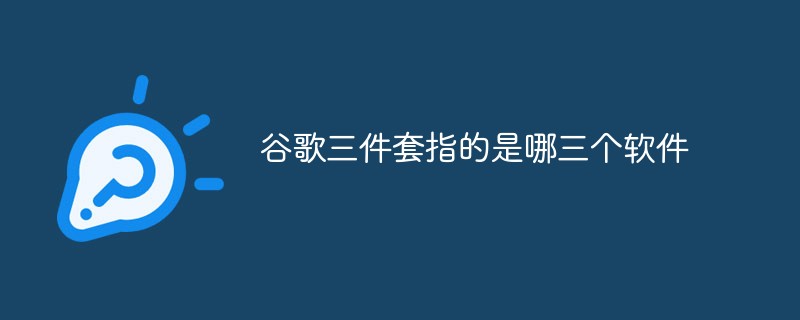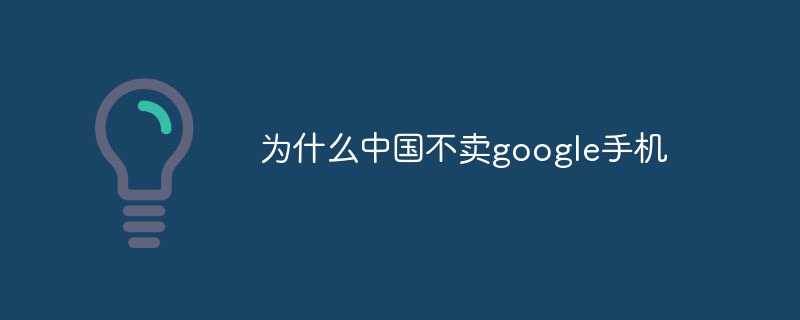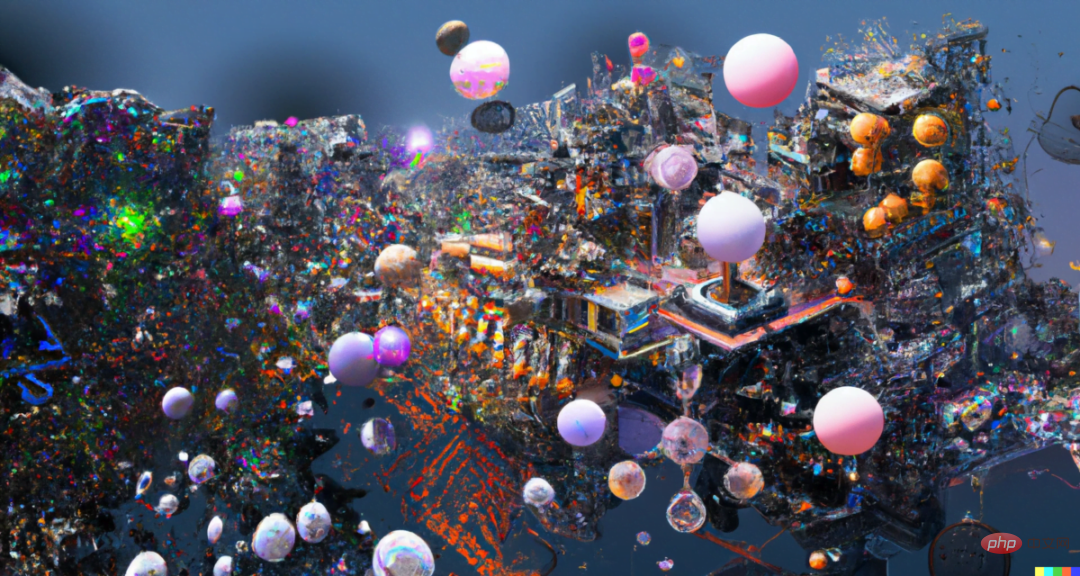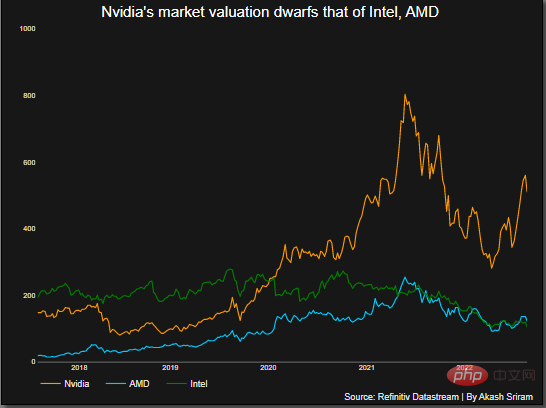 Technology peripherals
Technology peripherals AI
AI Google has not given up on TensorFlow and will release a new version in 2023, clarifying the four pillars
Google has not given up on TensorFlow and will release a new version in 2023, clarifying the four pillarsIn 2015, Google Brain opened a research project called "TensorFlow". This product quickly became popular and became the mainstream deep learning framework in the artificial intelligence industry, shaping the modern machine learning ecosystem. Since then, thousands of open source contributors and numerous developers, community organizers, researchers, and educators alike have invested in this open source software library.
However, seven years later, the story has taken a completely different direction: Google’s TensorFlow has lost the support of developers. Because TensorFlow users have begun to turn to PyTorch, another framework launched by Meta.
Many developers believe that TensorFlow has lost this war and liken it to: "PyTorch ate TensorFlow's lunch."
In the shadow of PyTorch, Google is quietly developing a machine learning framework, which is JAX (it used to be the acronym for "Just After eXecution", but officially no longer stands for anything), and many people refer to it as Considered the successor of TensorFlow.
For a while, it was widely known that Google was going to abandon TensorFlow and fully switch to JAX. In fact, Google has not given up on TensorFlow. They said that TensorFlow will develop side by side with JAX in the future.
But having said that, in these short seven years, TensorFlow has performed brilliantly and has developed into the most commonly used machine learning platform with millions of users. . TensorFlow is now downloaded over 18M times per month and has accumulated 166k stars on GitHub – more than any other ML framework.
Additionally, TensorFlow facilitates machine learning on the mobile ecosystem: TFLite currently runs on approximately 4 billion devices, including yours. TensorFlow has also brought machine learning to the web, with TensorFlow.js now being downloaded more than 170,000 times a week.
TensorFlow powers nearly all machine learning across Google’s entire product range, including Search, GMail, YouTube, Maps, Play, Ads, Photos, and more. In addition to Google, TensorFlow, a subsidiary of Alphabet, along with Keras, provides new machine intelligence for Waymo self-driving cars.
In the broader industry, TensorFlow powers machine learning systems at thousands of companies, including Apple, ByteDance, Netflix, Tencent, Twitter, and others. Research areas: TensorFlow is mentioned in more than 3,000 publications every month on Google Scholar, including important applied scientific research, such as the CANDLE study to understand cancer.
It is no exaggeration to say that TensorFlow has more basic users and developer ecosystem than ever before, and it is still growing. Google believes that the development of TensorFlow is not only an achievement worth celebrating, it also provides new opportunities for the machine learning community to go further.
Google’s long-standing goal is to provide the best machine learning platform and strive to transform machine learning from a niche craft into an industry software as mature as web development.
Google’s development of TensorFlow will continue. After 7 years, there will be another 7 years.
TensorFlow’s four future pillars
Recently, Google announced that they have begun developing the next iteration of TensorFlow and are focusing on the four pillars. More specifically, Google plans to release a new preview version of TensorFlow in the second quarter of 2023, followed by a production version later.

Fast and scalable
First comes XLA compilation. Google is focused on XLA compilation to make training and inference models faster on GPUs and CPUs, and is committed to making XLA the industry-standard deep learning compiler, and as part of the OpenXLA initiative, Google has opened it up to open source collaboration.

The second is distributed computing. Google is focusing on DTensor, a new API for large-scale model parallelism. DTensor will be unified with the tf.distribute API, allowing flexible model and data parallelism.
The last step is performance optimization. In addition to compilation, Google is further focusing on algorithmic performance optimizations such as mixed-precision and reduced-precision calculations to provide considerable speedups on GPUs and TPUs.
Applied ML
New tools for CV and NLP. Google is investing in the Applied ML ecosystem, specifically through the KerasCV and Keras NLP packages to provide modular and composable components for a variety of use cases.
Developer resources. Google is adding more code samples, guides, and documentation for popular and emerging applied machine learning use cases, lowering the barrier to entry for developers and making every development tool easy to use.
Deployment level
Easier to export. Google will make it easier to export models to mobile devices (Android or iOS), edge devices (microcontrollers), server backends, or JavaScript. Users can export models to TFLite and TF.js and optimize model inference performance as easily as calling model.export().
C API for applications. Google is developing a public TF2 C API for native server-side inference as part of C applications.
Deploy the JAX model. Google is making it easier to deploy models with TensorFlow services.

Simplified
NumPy API. The field of ML has grown rapidly over the past few years, and with it, TensorFlow's APIs have grown. In order to adapt to the development of technology, Google is fully integrating and simplifying APIs.
Make debugging easier. In the field of ML, debugging is a technology that cannot be ignored. Google will focus on better debugging capabilities to minimize its time.
Google says that TensorFlow will be 100% backwards compatible in the future. Google hopes that TensorFlow will become the cornerstone of the machine learning industry and promises that from TensorFlow 2 to the next version, TensorFlow will be fully backwards compatible and the code will run as-is, without the need to run conversion scripts and no manual changes. Google continues to invest in the TensorFlow framework to drive research and applications for millions of users.
The above is the detailed content of Google has not given up on TensorFlow and will release a new version in 2023, clarifying the four pillars. For more information, please follow other related articles on the PHP Chinese website!
 谷歌三件套指的是哪三个软件Sep 30, 2022 pm 01:54 PM
谷歌三件套指的是哪三个软件Sep 30, 2022 pm 01:54 PM谷歌三件套指的是:1、google play商店,即下载各种应用程序的平台,类似于移动助手,安卓用户可以在商店下载免费或付费的游戏和软件;2、Google Play服务,用于更新Google本家的应用和Google Play提供的其他第三方应用;3、谷歌服务框架(GMS),是系统软件里面可以删除的一个APK程序,通过谷歌平台上架的应用和游戏都需要框架的支持。
 为什么中国不卖google手机Mar 30, 2023 pm 05:31 PM
为什么中国不卖google手机Mar 30, 2023 pm 05:31 PM中国不卖google手机的原因:谷歌已经全面退出中国市场了,所以不能在中国销售,在国内是没有合法途径销售。在中国消费市场中,消费者大都倾向于物美价廉以及功能实用的产品,所以竞争实力本就因政治因素大打折扣的谷歌手机主体市场一直不在中国大陆。
 谷歌超强AI超算碾压英伟达A100!TPU v4性能提升10倍,细节首次公开Apr 07, 2023 pm 02:54 PM
谷歌超强AI超算碾压英伟达A100!TPU v4性能提升10倍,细节首次公开Apr 07, 2023 pm 02:54 PM虽然谷歌早在2020年,就在自家的数据中心上部署了当时最强的AI芯片——TPU v4。但直到今年的4月4日,谷歌才首次公布了这台AI超算的技术细节。论文地址:https://arxiv.org/abs/2304.01433相比于TPU v3,TPU v4的性能要高出2.1倍,而在整合4096个芯片之后,超算的性能更是提升了10倍。另外,谷歌还声称,自家芯片要比英伟达A100更快、更节能。与A100对打,速度快1.7倍论文中,谷歌表示,对于规模相当的系统,TPU v4可以提供比英伟达A100强1.
 LLM之战,谷歌输了!越来越多顶尖研究员跳槽OpenAIApr 07, 2023 pm 05:48 PM
LLM之战,谷歌输了!越来越多顶尖研究员跳槽OpenAIApr 07, 2023 pm 05:48 PM前几天,谷歌差点遭遇一场公关危机,Bert一作、已跳槽OpenAI的前员工Jacob Devlin曝出,Bard竟是用ChatGPT的数据训练的。随后,谷歌火速否认。而这场争议,也牵出了一场大讨论:为什么越来越多Google顶尖研究员跳槽OpenAI?这场LLM战役它还能打赢吗?知友回复莱斯大学博士、知友「一堆废纸」表示,其实谷歌和OpenAI的差距,是数据的差距。「OpenAI对LLM有强大的执念,这是Google这类公司完全比不上的。当然人的差距只是一个方面,数据的差距以及对待数据的态度才
 谷歌并未放弃TensorFlow,将于2023年发布新版,明确四大支柱Apr 12, 2023 am 11:52 AM
谷歌并未放弃TensorFlow,将于2023年发布新版,明确四大支柱Apr 12, 2023 am 11:52 AM2015 年,谷歌大脑开放了一个名为「TensorFlow」的研究项目,这款产品迅速流行起来,成为人工智能业界的主流深度学习框架,塑造了现代机器学习的生态系统。从那时起,成千上万的开源贡献者以及众多的开发人员、社区组织者、研究人员和教育工作者等都投入到这一开源软件库上。然而七年后的今天,故事的走向已经完全不同:谷歌的 TensorFlow 失去了开发者的拥护。因为 TensorFlow 用户已经开始转向 Meta 推出的另一款框架 PyTorch。众多开发者都认为 TensorFlow 已经输掉
 四分钟对打300多次,谷歌教会机器人打乒乓球Apr 10, 2023 am 09:11 AM
四分钟对打300多次,谷歌教会机器人打乒乓球Apr 10, 2023 am 09:11 AM让一位乒乓球爱好者和机器人对打,按照机器人的发展趋势来看,谁输谁赢还真说不准。机器人拥有灵巧的可操作性、腿部运动灵活、抓握能力出色…… 已被广泛应用于各种挑战任务。但在与人类互动紧密的任务中,机器人的表现又如何呢?就拿乒乓球来说,这需要双方高度配合,并且球的运动非常快速,这对算法提出了重大挑战。在乒乓球比赛中,首要的就是速度和精度,这对学习算法提出了很高的要求。同时,这项运动具有高度结构化(具有固定的、可预测的环境)和多智能体协作(机器人可以与人类或其他机器人一起对打)两大特点,使其成为研究人
 参数少量提升,性能指数爆发!谷歌:大语言模型暗藏「神秘技能」Apr 11, 2023 pm 11:16 PM
参数少量提升,性能指数爆发!谷歌:大语言模型暗藏「神秘技能」Apr 11, 2023 pm 11:16 PM由于可以做一些没训练过的事情,大型语言模型似乎具有某种魔力,也因此成为了媒体和研究员炒作和关注的焦点。当扩展大型语言模型时,偶尔会出现一些较小模型没有的新能力,这种类似于「创造力」的属性被称作「突现」能力,代表我们向通用人工智能迈进了一大步。如今,来自谷歌、斯坦福、Deepmind和北卡罗来纳大学的研究人员,正在探索大型语言模型中的「突现」能力。解码器提示的 DALL-E神奇的「突现」能力自然语言处理(NLP)已经被基于大量文本数据训练的语言模型彻底改变。扩大语言模型的规模通常会提高一系列下游N
 超5800亿美元!微软谷歌神仙打架,让英伟达市值飙升,约为5个英特尔Apr 11, 2023 pm 04:31 PM
超5800亿美元!微软谷歌神仙打架,让英伟达市值飙升,约为5个英特尔Apr 11, 2023 pm 04:31 PMChatGPT在手,有问必答。你可知,与它每次对话的计算成本简直让人泪目。此前,分析师称ChatGPT回复一次,需要2美分。要知道,人工智能聊天机器人所需的算力背后烧的可是GPU。这恰恰让像英伟达这样的芯片公司豪赚了一把。2月23日,英伟达股价飙升,使其市值增加了700多亿美元,总市值超5800亿美元,大约是英特尔的5倍。在英伟达之外,AMD可以称得上是图形处理器行业的第二大厂商,市场份额约为20%。而英特尔持有不到1%的市场份额。ChatGPT在跑,英伟达在赚随着ChatGPT解锁潜在的应用案


Hot AI Tools

Undresser.AI Undress
AI-powered app for creating realistic nude photos

AI Clothes Remover
Online AI tool for removing clothes from photos.

Undress AI Tool
Undress images for free

Clothoff.io
AI clothes remover

AI Hentai Generator
Generate AI Hentai for free.

Hot Article

Hot Tools

SAP NetWeaver Server Adapter for Eclipse
Integrate Eclipse with SAP NetWeaver application server.

EditPlus Chinese cracked version
Small size, syntax highlighting, does not support code prompt function

Dreamweaver Mac version
Visual web development tools

Notepad++7.3.1
Easy-to-use and free code editor

VSCode Windows 64-bit Download
A free and powerful IDE editor launched by Microsoft






